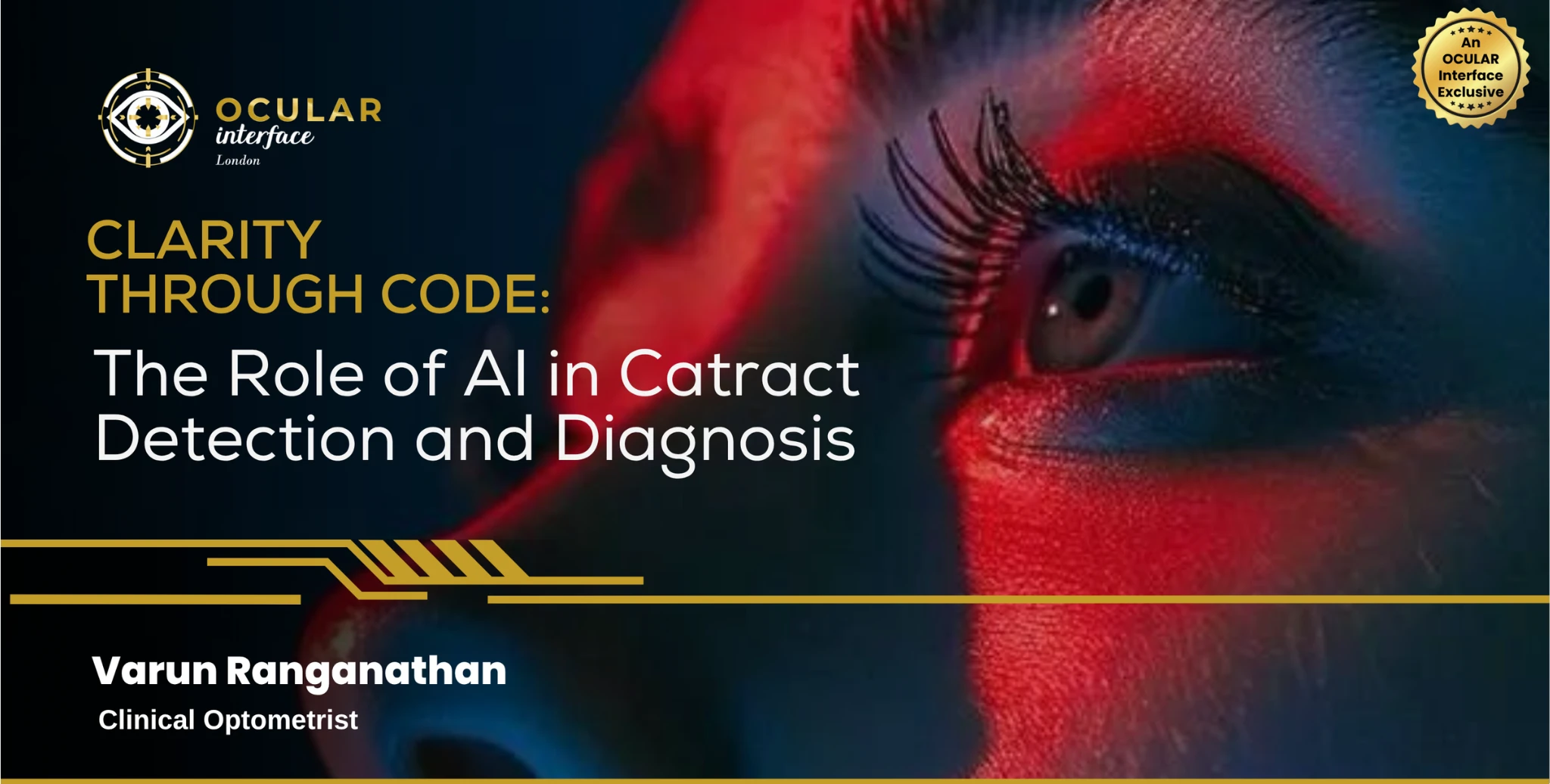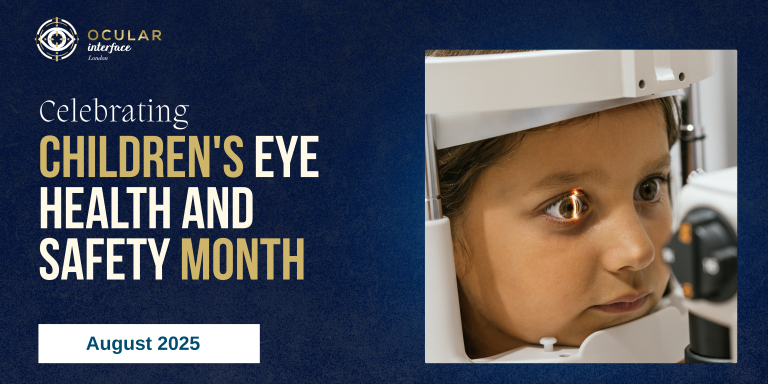Varun Ranganathan, MCOptom
Clinical Optometrist
An OCULAR Interface Exclusive
Cataracts remain one of the leading causes of visual impairment and blindness worldwide, particularly in low- and middle-income countries. Characterised by clouding of the eye’s crystalline lens, cataracts develop gradually and can severely impact quality of life if left untreated. While cataract surgery is safe and highly effective, timely diagnosis is critical. In this context, artificial intelligence (AI) is emerging as a transformative force in eye care, offering new tools to detect cataracts faster, more accurately, and in places where access to specialists is limited.
The Growing Need for AI in Cataract Diagnosis
Globally, over 90 million people suffer from cataracts, 1 with millions more undiagnosed due to lack of screening infrastructure or access to ophthalmologists. Traditional diagnosis relies on slit-lamp examination, visual acuity tests, and manual grading 2—methods that are time-consuming and require trained personnel. AI, with its ability to process vast amounts of image data rapidly, is poised to bridge this diagnostic gap.
By leveraging machine learning, particularly deep learning algorithms, AI can analyse ocular images—such as slit-lamp or fundus photographs—to detect cataract presence and severity. 3 These systems learn from thousands of labeled images, enabling them to recognise subtle signs of lens opacity that may go unnoticed in a rushed clinical setting.
How AI Enhances Detection Accuracy
Recent studies have demonstrated that AI systems can match or even exceed the diagnostic performance of experienced ophthalmologists in identifying cataracts. 4 For example, convolutional neural networks (CNNs) trained on labeled datasets can classify images as normal or cataract-affected with high sensitivity and specificity. 5 Some models also assign severity scores, assisting clinicians in prioritising surgical intervention.
What makes AI especially promising is its consistency and scalability. Unlike human examiners, AI tools do not suffer from fatigue or subjectivity. Once trained, they can screen thousands of images quickly, making them ideal for use in mass screening programs or tele-ophthalmology setups.
Empowering Remote and Underserved Communities
In regions with a shortage of eye care professionals, AI-driven diagnostic platforms can play a crucial role. Mobile eye clinics equipped with handheld fundus cameras and AI-based analysis tools allow field workers to screen individuals on-site and refer only the most urgent cases to specialists. 6 This approach not only conserves resources but also ensures that patients at greatest risk receive timely attention.
Several initiatives are already underway. In certain countries, pilot programs have shown that AI-based screening can dramatically improve cataract detection rates while reducing the burden on overextended healthcare systems. 7
Ethical and Practical Considerations
Despite its potential, integrating AI into cataract diagnosis is not without challenges. 8 Ensuring the quality and diversity of training datasets is essential to prevent algorithmic bias. Systems must be validated across populations with varying ethnicities, age groups, and image quality. Additionally, AI tools should be seen as decision support systems, not replacements for clinical judgment. 9
Transparency in how AI models arrive at their conclusions—often called “explainability”—is also vital for building clinician and patient trust. 10 Regulatory approval and ethical oversight will play an increasing role as these technologies enter mainstream practice.
A Clearer Future for Eye Health
Artificial intelligence is helping bring much-needed clarity to the world of cataract diagnosis. By enhancing the accuracy, speed, and accessibility of screening, AI is not just improving clinical outcomes—it’s also democratizing eye care. As technology continues to evolve, partnerships between clinicians, developers, and policymakers will be essential to ensure that AI in cataract care is ethical, effective, and equitable.
References
- GBD 2019 Risk Factors Collaborators . Global burden of 87 risk factors in 204 countries and territories, 1990-2019: a systematic analysis of the global burden of disease study 2019. Lancet. (2020) 396:1223–49.
- Nizami AA, Gurnani B, Gulani AC. Cataract. [Updated 2024 Feb 27]. In: StatPearls [Internet]. Treasure Island (FL): StatPearls Publishing; 2025 Jan-. Available from: https://www.ncbi.nlm.nih.gov/books/NBK539699/.
- Carmona González D, Palomino BC. Accuracy of a new intraocular lens power calculation method based on artificial intelligence. Eye (Lond) 2021;35(2):517–522. doi: 10.1038/s41433-020-0883-3.
- Li W, Yang Y, Zhang K, Long E, He L, Zhang L, et al. Dense anatomical annotation of slit-lamp images improves the performance of deep learning for the diagnosis of ophthalmic disorders. Nat Biomed Eng. 2020;4(8):767–777. doi: 10.1038/s41551-020-0577-y.
- Gao X, Lin S, Wong TY. Automatic feature learning to grade nuclear cataracts based on deep learning. IEEE Trans Biomed Eng. 2015;62(11):2693–2701. doi: 10.1109/TBME.2015.2444389.
- Lin D, Chen J, Lin Z, Li X, Zhang K, Wu X, et al. A practical model for the identification of congenital cataracts using machine learning. EBioMedicine. 2020;51:102621.
- Kshetri N. Artificial intelligence in developing countries. IEEE Ann Hist Comput. 2020;22(04):63–68.
- Danso SO, Muniz-Terrera G, Luz S, Ritchie C; Global Dementia Prevention Program (GloDePP). Application of big data and artificial intelligence technologies to dementia prevention research: an opportunity for low- and-middle-income countries. J Glob Health. 2019;9(2):020322.
- Shortliffe, E. H., & Sepúlveda, M. J. (2018). Clinical decision support in the era of artificial intelligence. JAMA, 320(21), 2199–2200. https://doi.org/10.1001/jama.2018.17163
- World Health Organization. (2021). Ethics and governance of artificial intelligence for health. https://www.who.int/publications/i/item/9789240029200.










